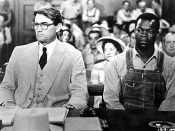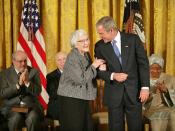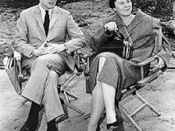First impressions of people are often lasting impressions, especially in the minds of children. Unfortunately, these impressions lead to hasty conclusions, thus, discrediting the individual who conveys the impression and causing the observers to inaccurately assess his true character. Many times these impressions, aided by misunderstanding and prejudgment, cause unjust discrimination against an individual. In Harper Lee's novel the standardized prejudices or misconceptions of people accepted by everyone in Maycomb limit the way its citizen's define each other's relationships. The lasting impressions of prejudice that are placed on Scout and Jem are shown to be what the tale of To Kill a Mockingbird is about. How these prejudices define and effect the people growing up around them and the slim chance they have to change the judgements from continuing on.
Many people in society are looked down upon because they live differently or act in ways that are considered strange by most people.
Then, their differences are labeled by neighbors watching from the outside. To Kill a Mockingbird depicts the themes of misunderstanding and prejudice, which portray Arthur (Boo) Radley as a villain. Scout, Jem and Dill receive most of their town gossip about Boo from Miss Stephanie Crawford. She tells the children of Radley's scissor attack on his father and other such interesting rumors. Thus, Arthur Radley is labeled as a "hant", a possibly insane and dangerous man, and the "malevolent phantom." Scout and other children are immersed in the prejudices of the people that surround them. Children pick up on these prejudices and become infatuated with them as Scout, Jem and Dill are. Furthermore, on top of all the misjudgments brought on by the children, the general public discriminates upon Radley, forming the children to be prejudice. "People said he went out at night when the moon...


